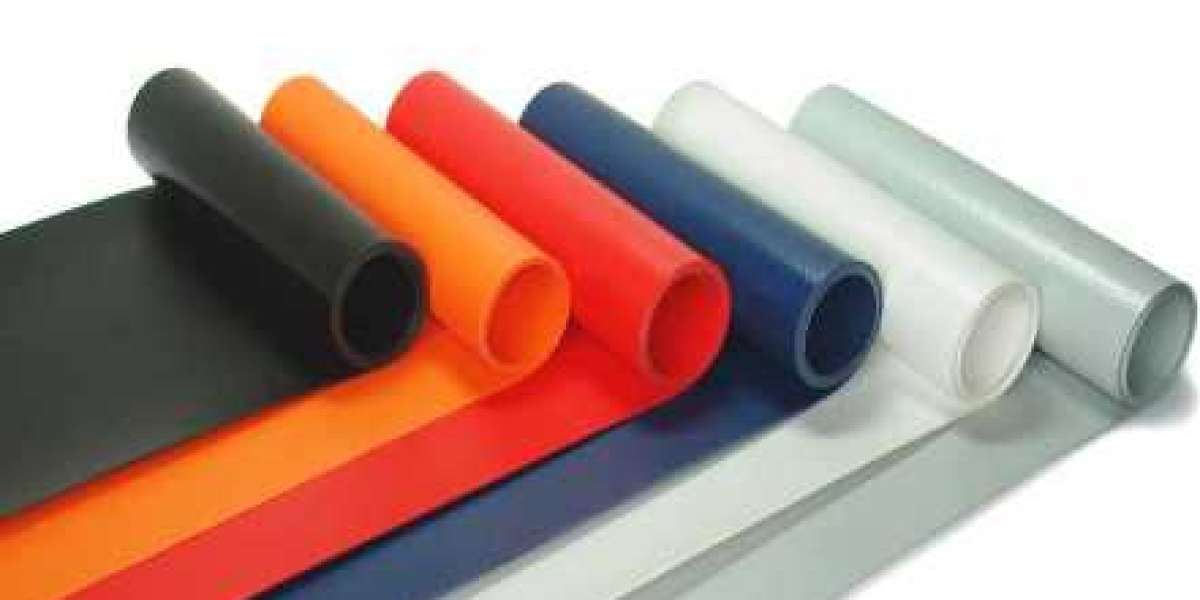The demand for health and wellness products continues to rise, driven by consumers’ growing interest in natural, eco-friendly solutions. Among these, biodegradable thermal cramp relief patches are gaining popularity due to their non-invasive and natural approach to alleviating muscle cramps and pain. These patches use heat therapy combined with biodegradable materials to provide targeted relief, all while being environmentally friendly. As the market for sustainable healthcare products grows, setting up a manufacturing plant for biodegradable thermal cramp relief patches presents a promising business opportunity. This project report explores the key aspects of setting up and operating a plant that manufactures these innovative patches, from production processes to market trends and financial considerations.
Location and Setup Considerations
Selecting the right location for a biodegradable thermal cramp relief patches manufacturing plant is essential for the overall success of the business. The plant should be strategically positioned to ensure easy access to raw materials, labor, and logistics. Proximity to suppliers of biodegradable materials, including natural fibers, organic compounds, and adhesives, is essential to ensure a steady supply chain for production.
The plant should also be located near transportation hubs to facilitate the distribution of the final product to retailers, wholesalers, and online platforms. Additionally, considering environmental regulations is critical. Since the product itself is eco-friendly, it is essential to ensure that the manufacturing process is in line with sustainability practices, such as waste reduction and the use of renewable energy sources.
Get a Free Sample Report with Table of Contents@ https://www.expertmarketresearch.com/prefeasibility-reports/biodegradable-thermal-cramp-relief-patches-manufacturing-plant-project-report/requestsample
Equipment and Machinery Requirements
A manufacturing plant for biodegradable thermal cramp relief patches requires specific equipment to ensure the quality, efficiency, and consistency of the final product. The following are the main types of equipment and machinery required:
- Mixing and Formulation Equipment: This includes machines for blending ingredients like natural herbs, biodegradable adhesives, and thermal materials. These ingredients are combined to create the patch’s active components and ensure consistent potency and effectiveness.
- Thermal Activation Systems: These systems are essential to heat the patches to the appropriate temperature once they are manufactured. The thermal mechanism, often using natural heat-producing materials like iron powder, is activated when the patch is applied to the skin.
- Cutting and Shaping Machines: After the active components are blended and applied to the biodegradable base material, the patches need to be cut and shaped into the desired size and form. Precision cutting machines ensure uniformity and correct dimensions.
- Packaging and Labeling Systems: Once the patches are formed, they need to be packaged and labeled for distribution. Automated packaging lines that ensure hygiene and consistency in packaging are important to maintain the integrity of the product.
- Quality Control and Testing Equipment: Given that these patches are designed to offer therapeutic benefits, they must undergo thorough quality control and testing. This includes checking for proper heat distribution, the strength of adhesion, and the patch’s biodegradability. Testing equipment ensures that each batch meets high-quality standards before it is shipped to the market.
Investing in reliable, high-quality equipment is key to ensuring the efficient production of safe, effective, and sustainable thermal cramp relief patches.
Raw Materials and Ingredients
The raw materials required for manufacturing biodegradable thermal cramp relief patches must align with the goals of sustainability and safety. The following raw materials are typically used in the production process:
- Biodegradable Base Materials: The primary material for the patches should be biodegradable, often derived from natural fibers like cotton, bamboo, or plant-based polymers. These materials ensure that the patches decompose naturally after use, reducing environmental impact.
- Thermal Activation Ingredients: Iron powder, activated charcoal, and salt are some of the key ingredients used to generate heat when the patch is activated. These components react in a way that provides consistent, soothing heat for muscle cramps and discomfort.
- Herbal and Natural Extracts: Many cramp relief patches contain herbal extracts like menthol, camphor, or eucalyptus, known for their soothing properties. These ingredients add a therapeutic element to the patch, providing additional relief from muscle pain and discomfort.
- Adhesives: Biodegradable adhesives are used to ensure that the patches remain securely in place when applied to the skin. These adhesives should be safe for prolonged skin contact and environmentally friendly to match the product’s overall sustainable ethos.
- Packaging Materials: To maintain the eco-friendly nature of the product, packaging materials should also be biodegradable or recyclable. This could include plant-based plastics or cardboard packaging.
Careful sourcing of raw materials is essential to maintain product quality, effectiveness, and the brand's commitment to sustainability.
Production Process
The production process of biodegradable thermal cramp relief patches involves several key stages to ensure the final product is effective, safe, and environmentally friendly. The process typically includes the following steps:
Preparation of Raw Materials: In the first stage, raw materials such as biodegradable fibers, herbal extracts, and thermal components are sourced and prepared. The thermal materials are mixed with the biodegradable base to create a layer that can generate heat when activated. Natural extracts like menthol are also incorporated at this stage for their therapeutic properties.
Formulation and Mixing: Once the materials are prepared, they are mixed to create a uniform blend. This includes blending the active ingredients that will generate heat and provide relief, such as iron powder, activated charcoal, and salt. Natural herbs or oils are also mixed into the formulation to ensure consistency in strength and effectiveness.
Application to Base Material: The mixture of active ingredients is then applied to the biodegradable base material, typically in thin layers. The heat-producing compounds are evenly spread across the surface to ensure that the patch works consistently once activated.
Shaping and Cutting: After the active components are applied to the base material, the patches are cut into the desired shape and size. Precision is critical in this stage to ensure uniformity in the product, as the patches must be the right size to fit the body’s target areas.
Activation Mechanism Integration: The thermal activation mechanism is integrated into the patch. This typically involves placing heat-producing materials like iron powder into a sealed pocket that reacts when the patch is exposed to air. This step is critical to ensuring the patch’s effectiveness.
Quality Control and Testing: The patches undergo a series of quality control checks to ensure that they meet the required standards for performance and safety. This includes tests for proper heat distribution, adhesion strength, biodegradability, and the consistency of the herbal extracts.
Packaging and Labeling: Once the patches have passed the necessary quality checks, they are packaged and labeled for distribution. The packaging materials are carefully selected to ensure they align with the product’s eco-friendly values, often using biodegradable or recyclable materials.
Distribution: Finally, the packaged patches are distributed to retailers, wholesalers, or directly to consumers through e-commerce platforms. The distribution process needs to be efficient to ensure that the product reaches the market in a timely manner.
Workforce and Labor Requirements
Running a biodegradable thermal cramp relief patches manufacturing plant requires a skilled workforce to manage the production process, quality control, and daily operations. The roles involved include:
- Production Operators: These workers are responsible for operating machinery, mixing ingredients, and assembling the patches. They ensure the production process runs smoothly and efficiently.
- Quality Control Inspectors: Ensuring the quality of each patch is critical. Quality control inspectors test the patches at various stages to verify the heat output, adhesion, and overall effectiveness of the patches.
- RD and Chemical Engineers: These professionals work on improving the formulation of the cramp relief patches, researching new natural ingredients, and optimizing the thermal activation process.
- Maintenance Technicians: Maintenance staff ensure that the equipment is properly maintained and operational, minimizing downtime and preventing production delays.
- Packaging and Logistics Staff: These workers are responsible for packaging the patches securely and ensuring that they are correctly labeled and ready for shipment.
Ensuring the plant has a trained and efficient workforce is key to maintaining high production standards and meeting market demand.
Regulatory Compliance and Environmental Standards
A biodegradable thermal cramp relief patches manufacturing plant must adhere to a range of regulatory and environmental standards to ensure the product's safety and sustainability. Compliance with local and international regulations is necessary for legal operation and consumer trust.
- FDA Regulations: Since the product is designed for therapeutic use, it may fall under the jurisdiction of health authorities such as the FDA in the United States or similar regulatory bodies in other countries. The plant must follow all guidelines regarding the safety and efficacy of the product.
- ISO Certifications: Obtaining ISO certifications such as ISO 9001 (Quality Management Systems) and ISO 14001 (Environmental Management) ensures the manufacturing process adheres to global quality and environmental standards.
- Environmental Regulations: As the product is biodegradable, the plant should ensure its production processes minimize environmental impact, including the responsible disposal of waste and the use of renewable energy sources in manufacturing.
Adhering to these regulatory requirements not only ensures legal compliance but also builds consumer confidence in the sustainability and safety of the product.
Market Demand and Business Opportunities
Biodegradable thermal cramp relief patches cater to an expanding market driven by consumers’ increasing preference for natural and eco-friendly healthcare solutions. The product’s market potential spans multiple industries, including:
- Healthcare: Biodegradable cramp relief patches offer a natural alternative to over-the-counter pain medications, providing targeted relief for muscle cramps and discomfort.
- Athletics and Sports: Athletes and fitness enthusiasts often experience muscle cramps, making them a key target demographic for thermal relief patches. The product can be marketed as a natural and non-invasive solution for muscle recovery.
- Consumer Wellness: With increasing interest in holistic wellness, more consumers are seeking natural remedies for common ailments, including muscle cramps and tension. The biodegradable aspect of the patches appeals to environmentally conscious consumers.
- Eco-friendly Product Markets: As sustainability becomes more important to consumers, biodegradable products are increasingly in demand across various sectors. Marketing the patches as part of a sustainable healthcare product line can enhance their appeal to eco-conscious buyers.
The growing trend of health and wellness, combined with a focus on sustainability, presents significant business opportunities for manufacturers of biodegradable thermal cramp relief patches. Targeting niche markets and leveraging the eco-friendly nature of the product can lead to long-term growth and success in this industry.



